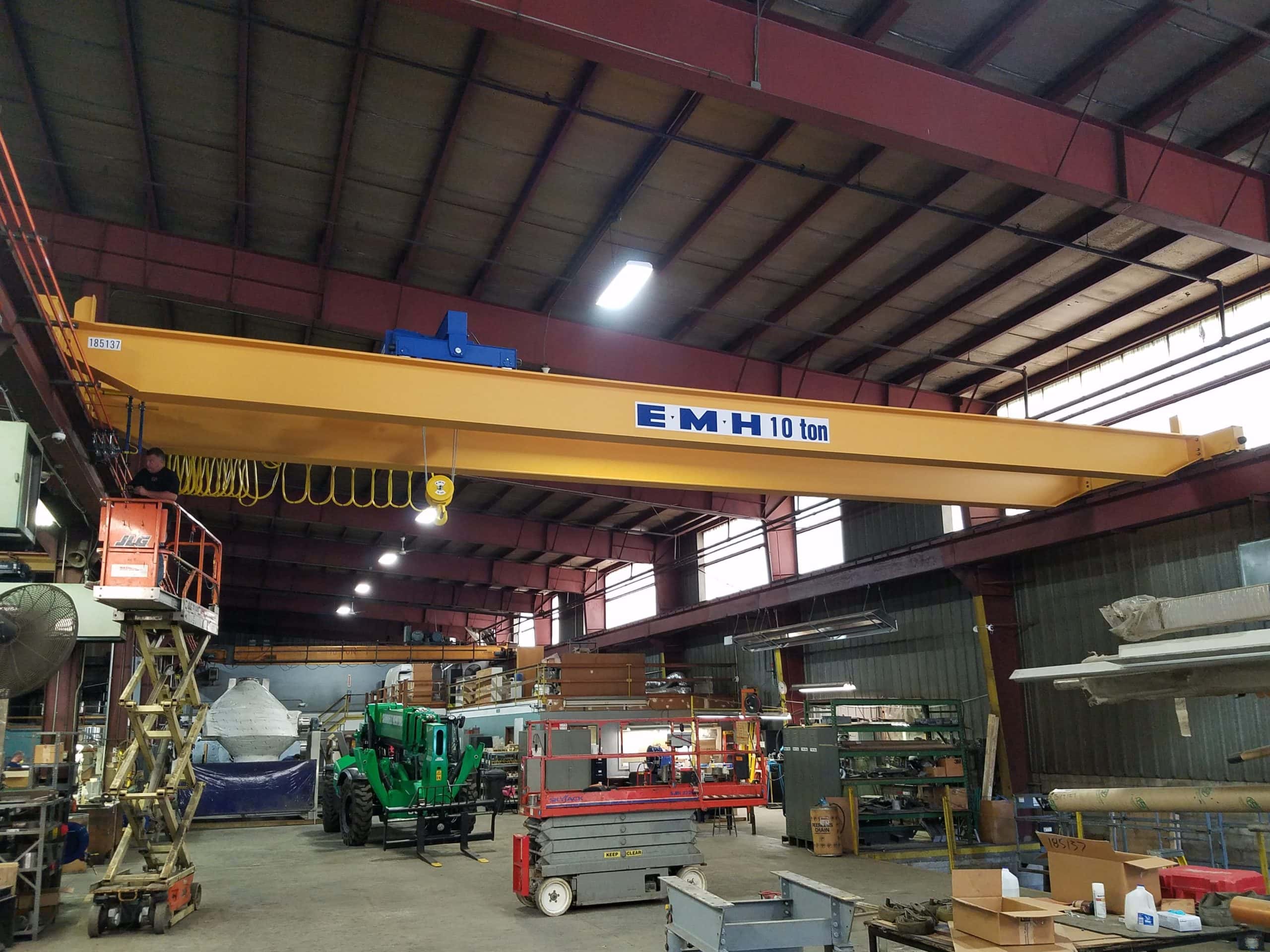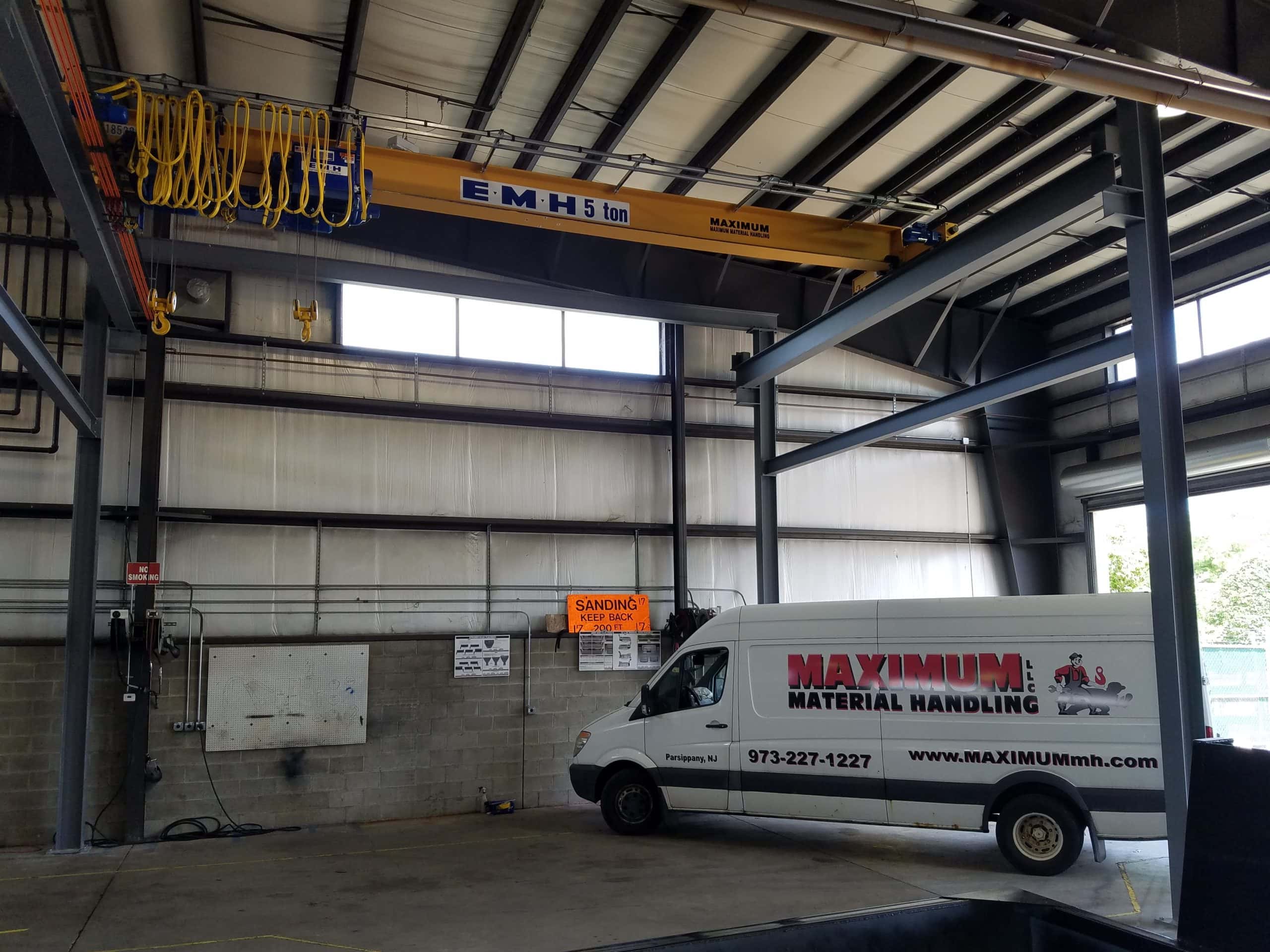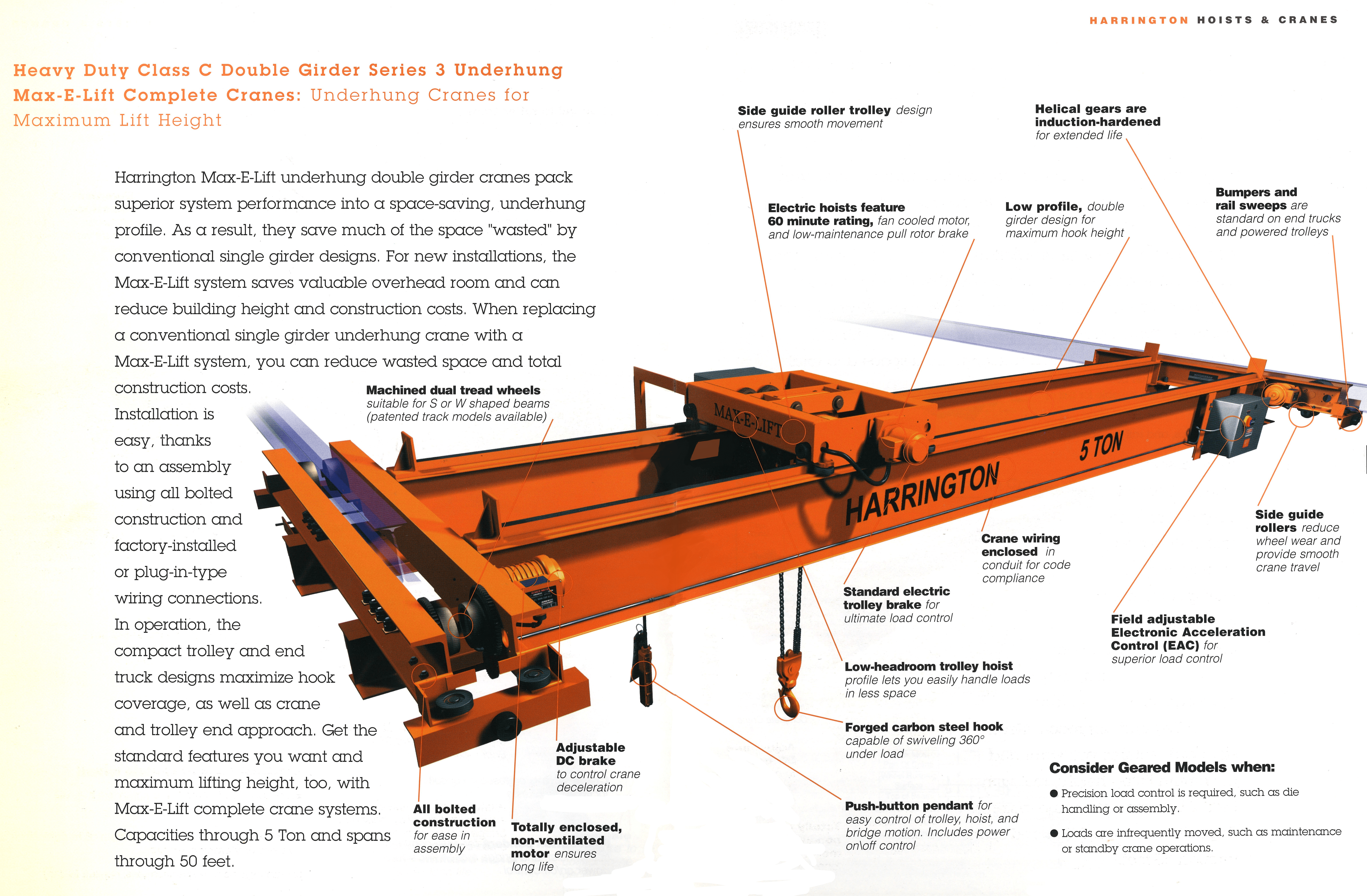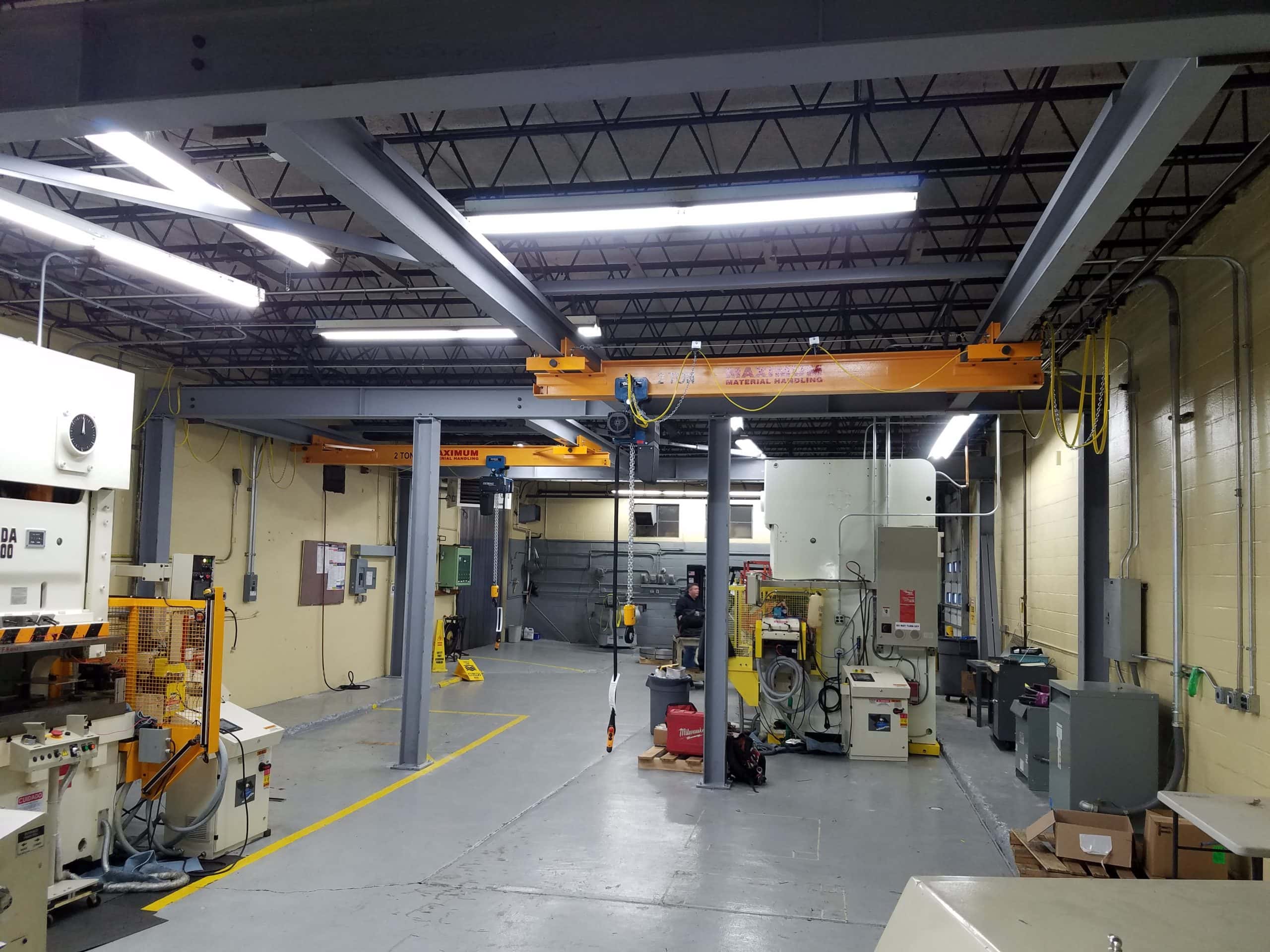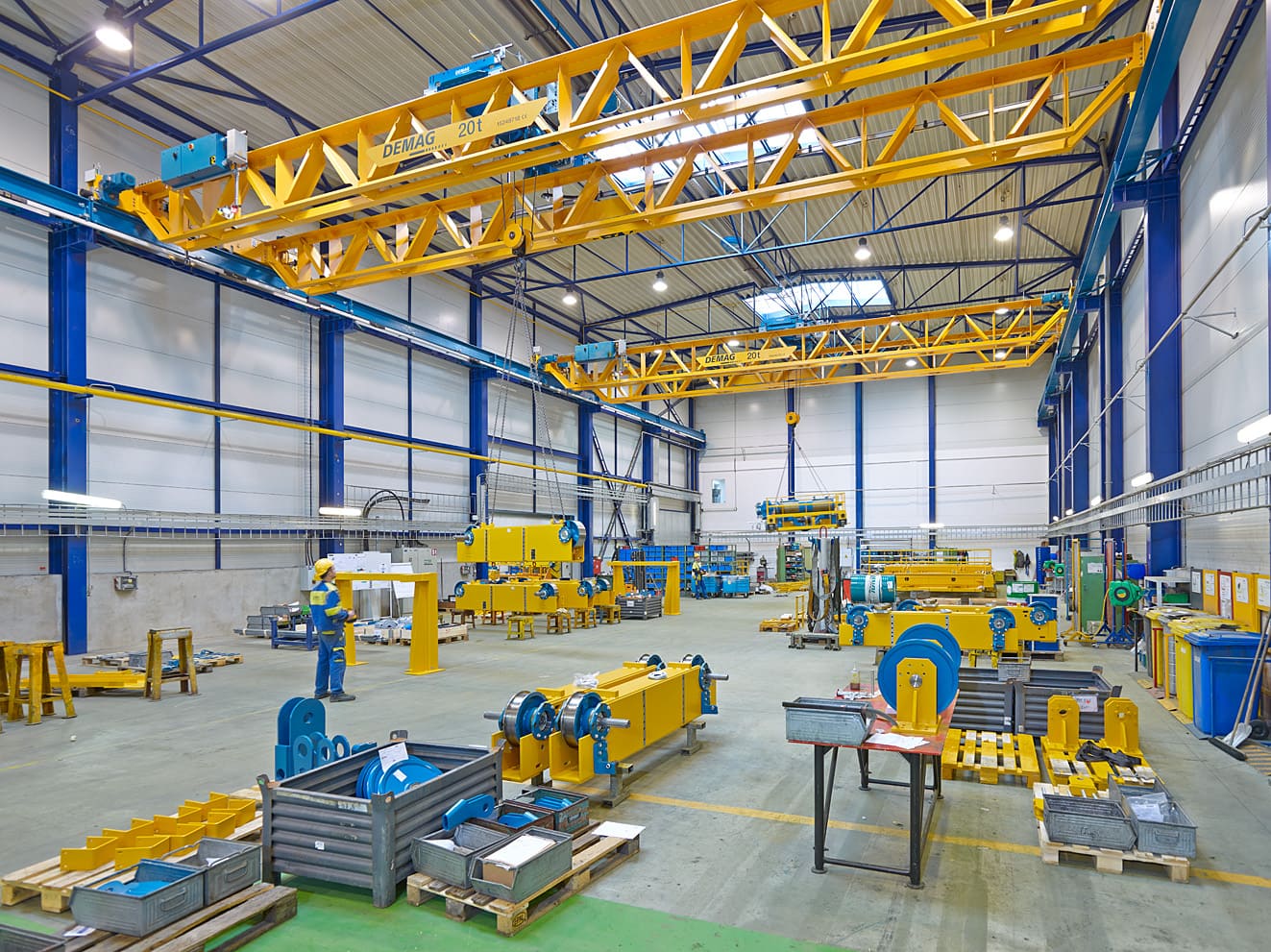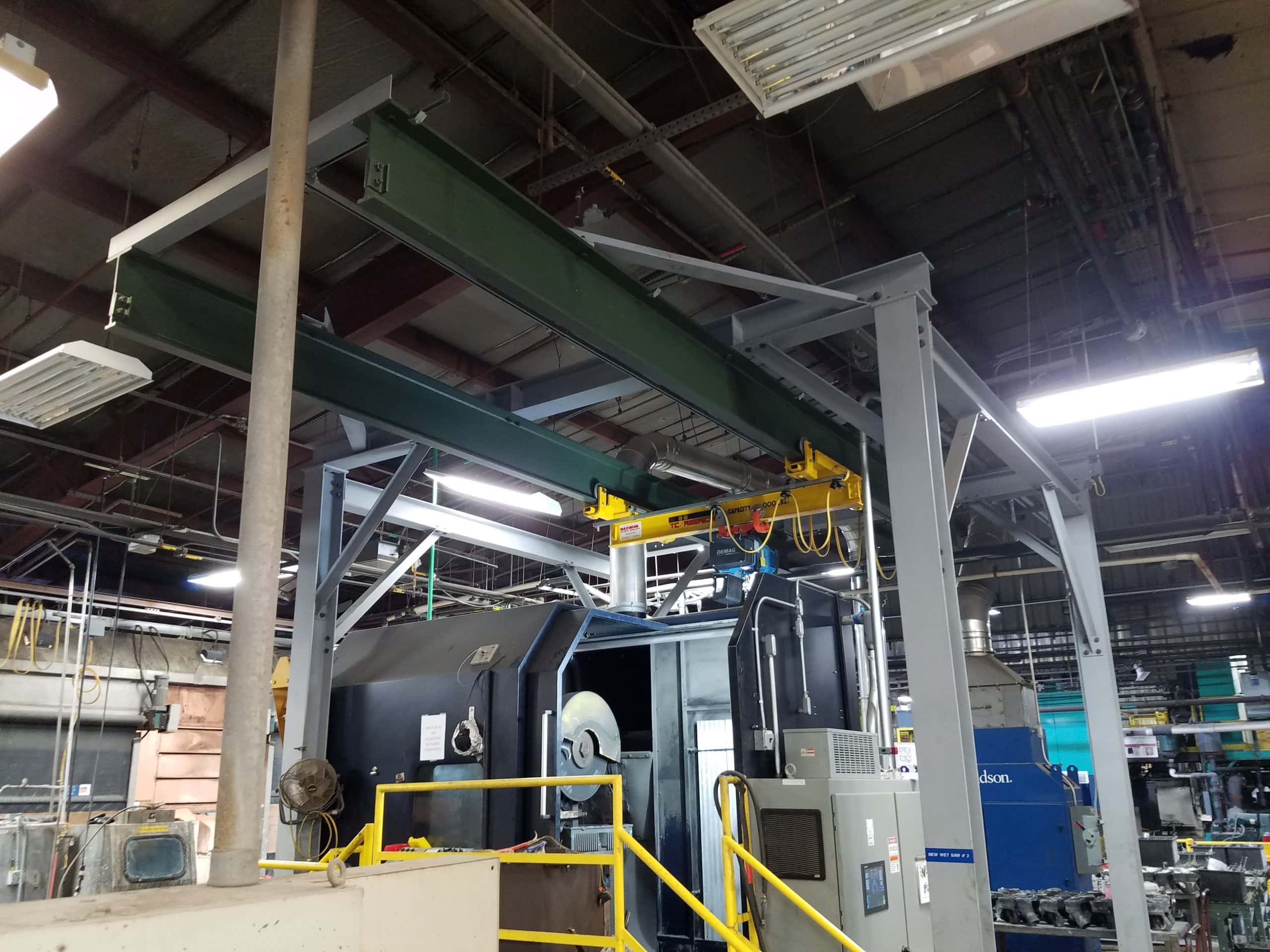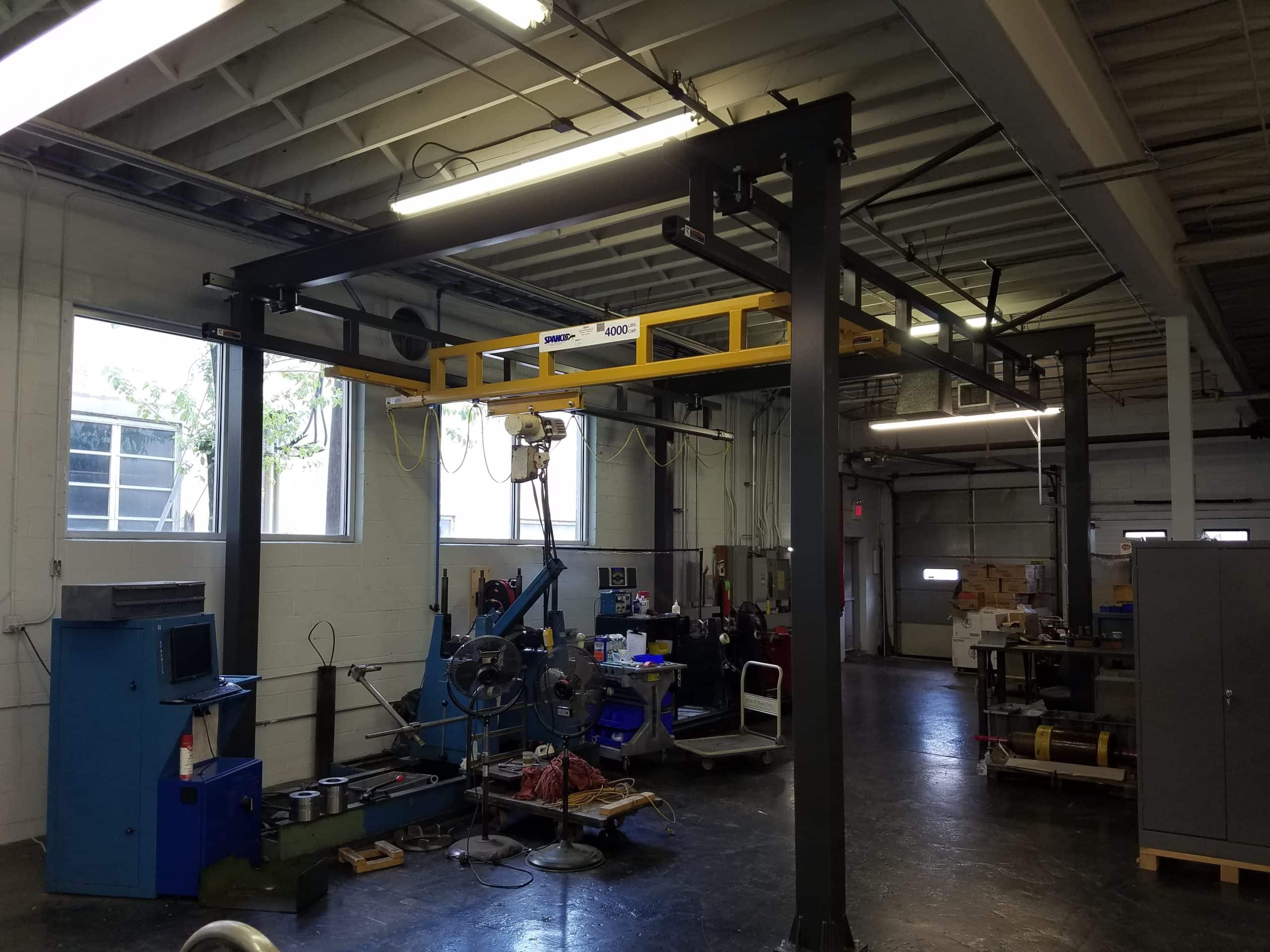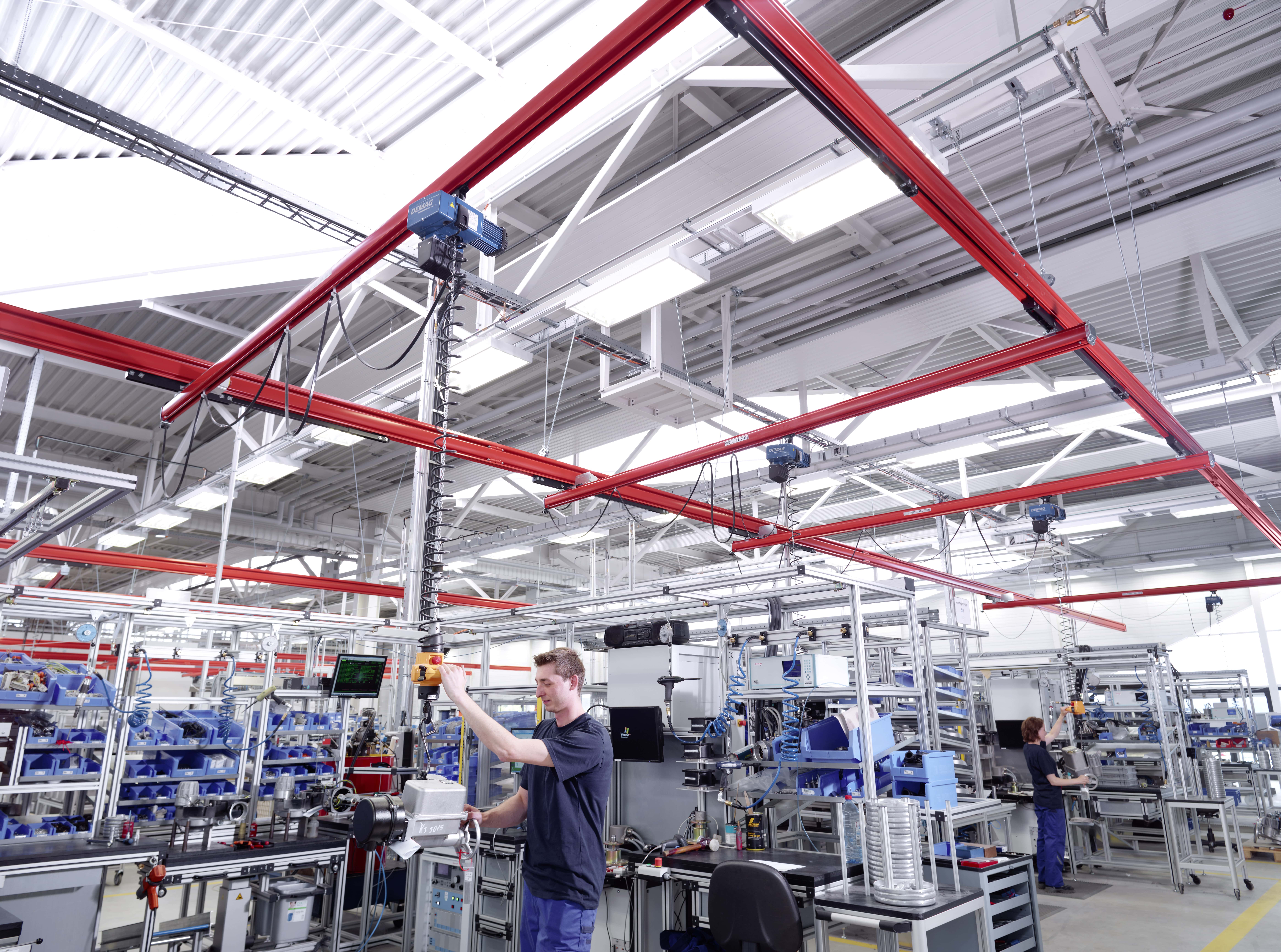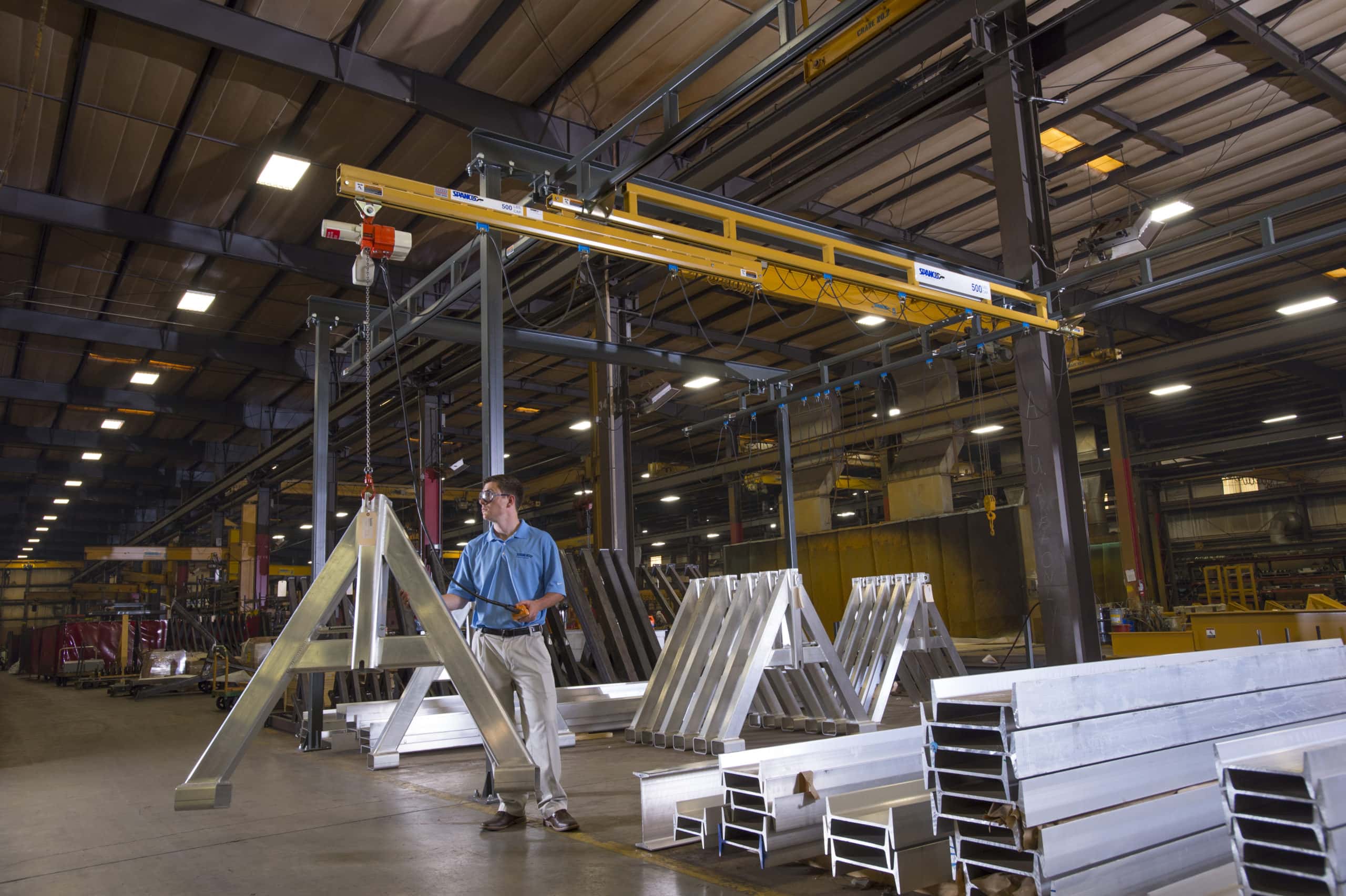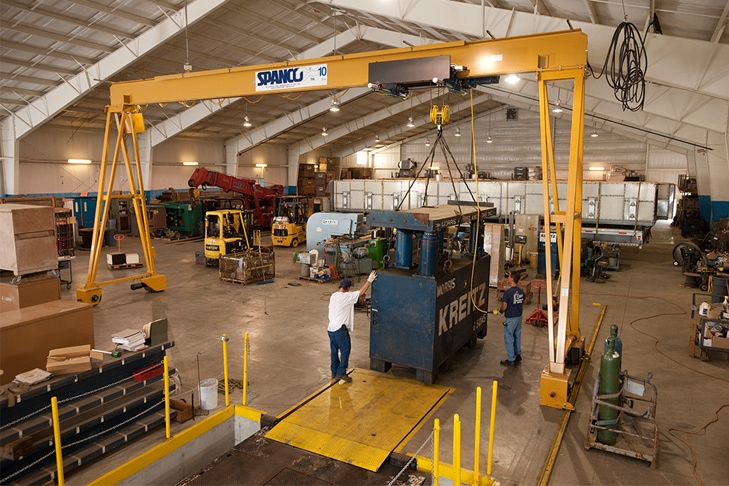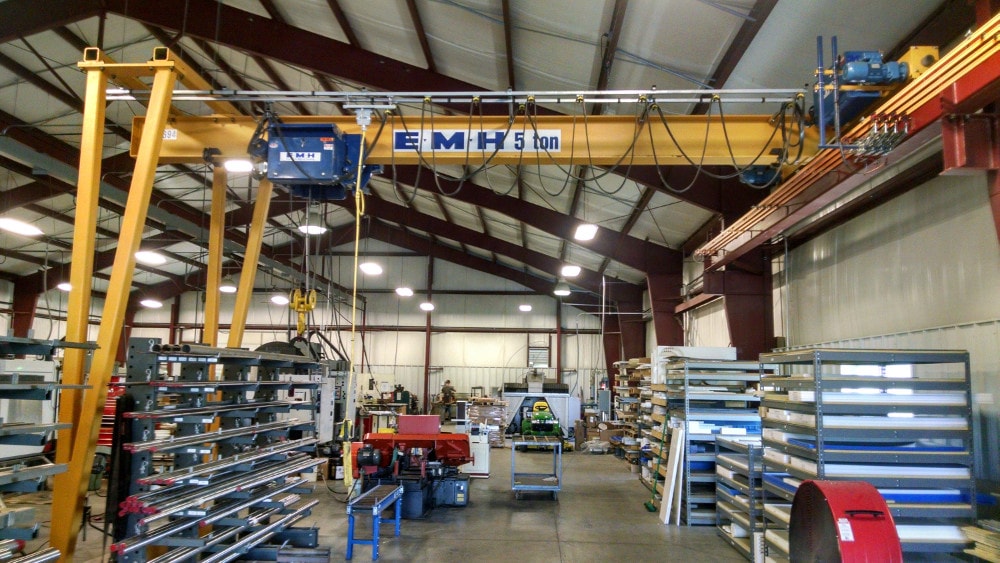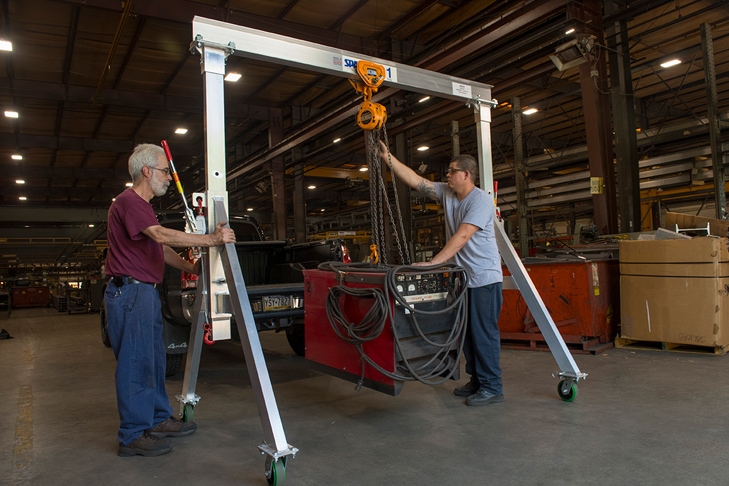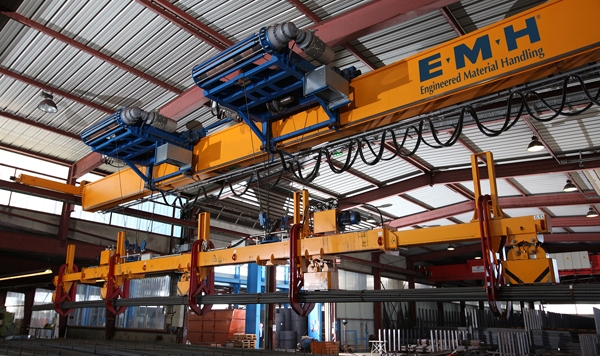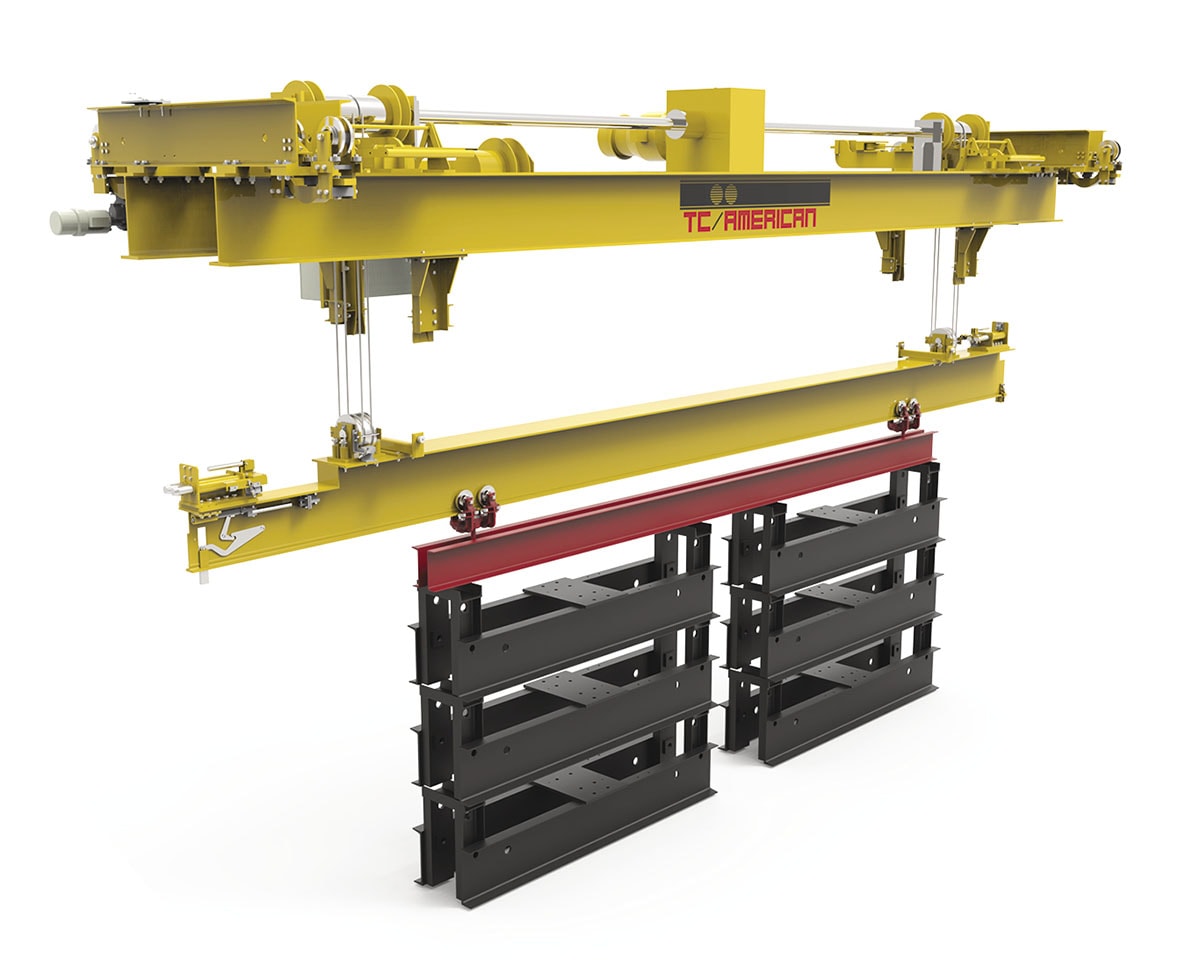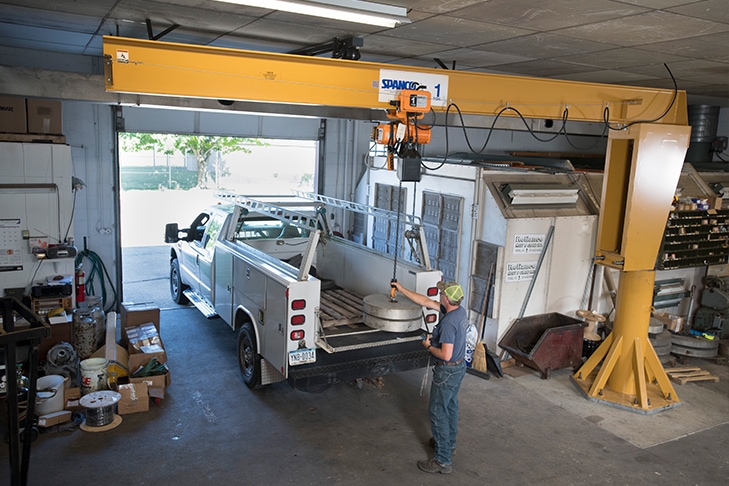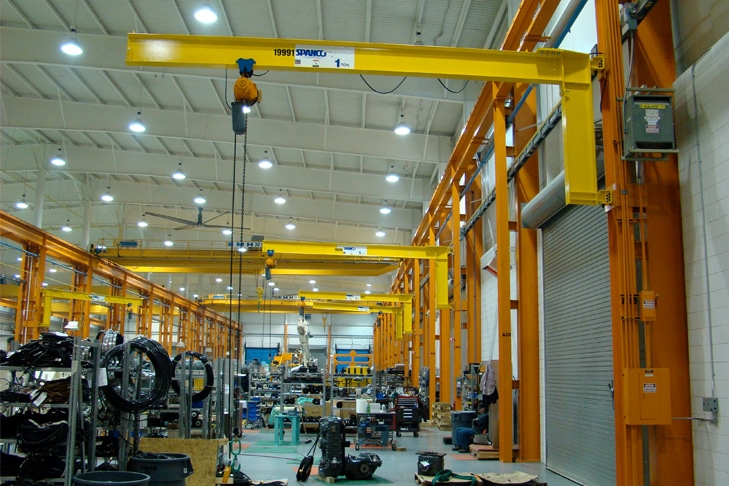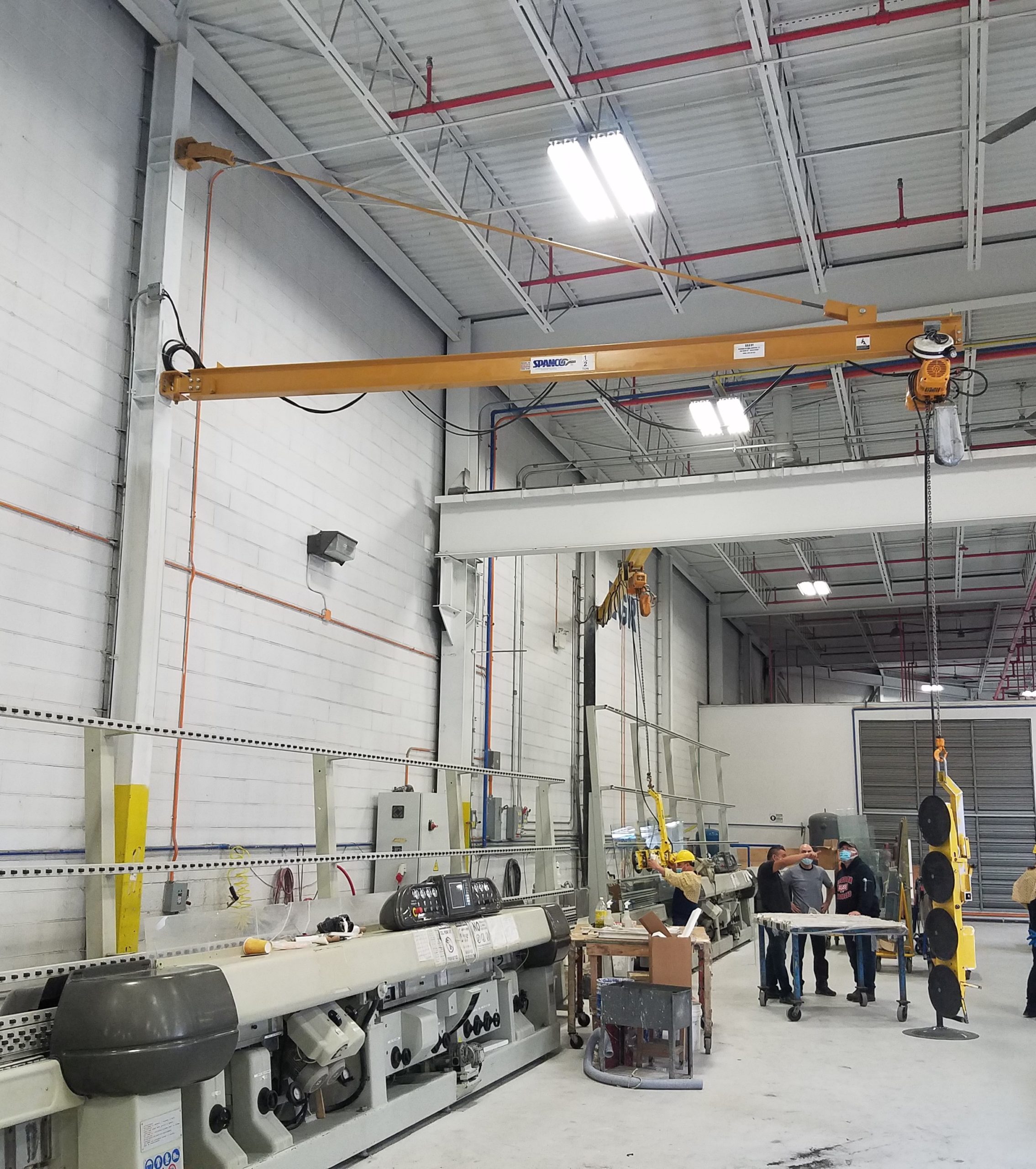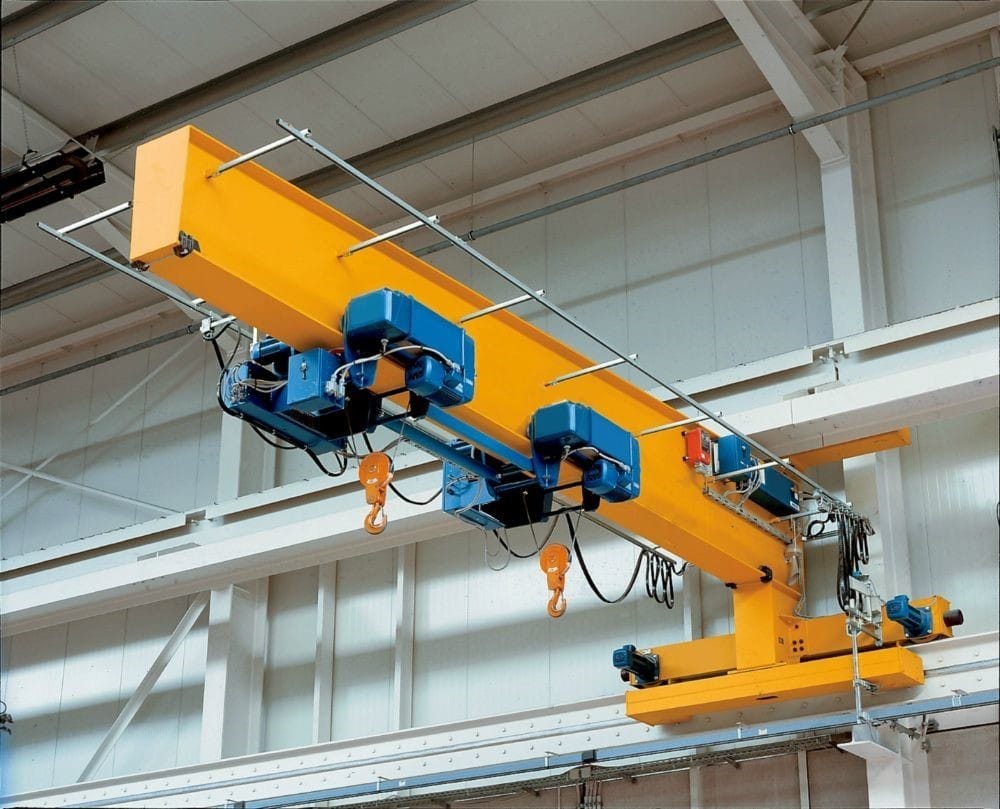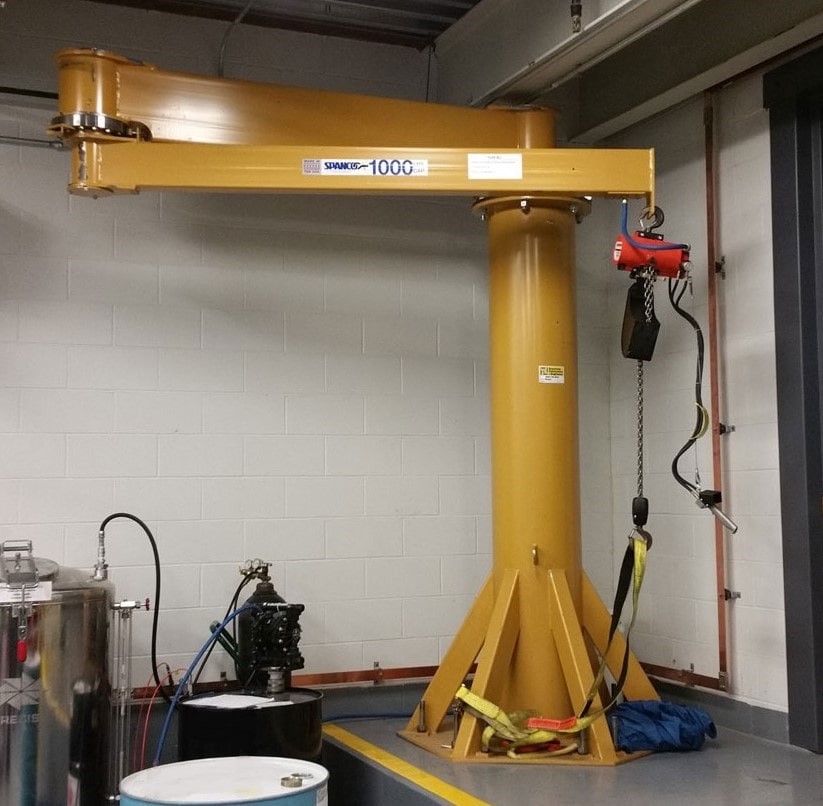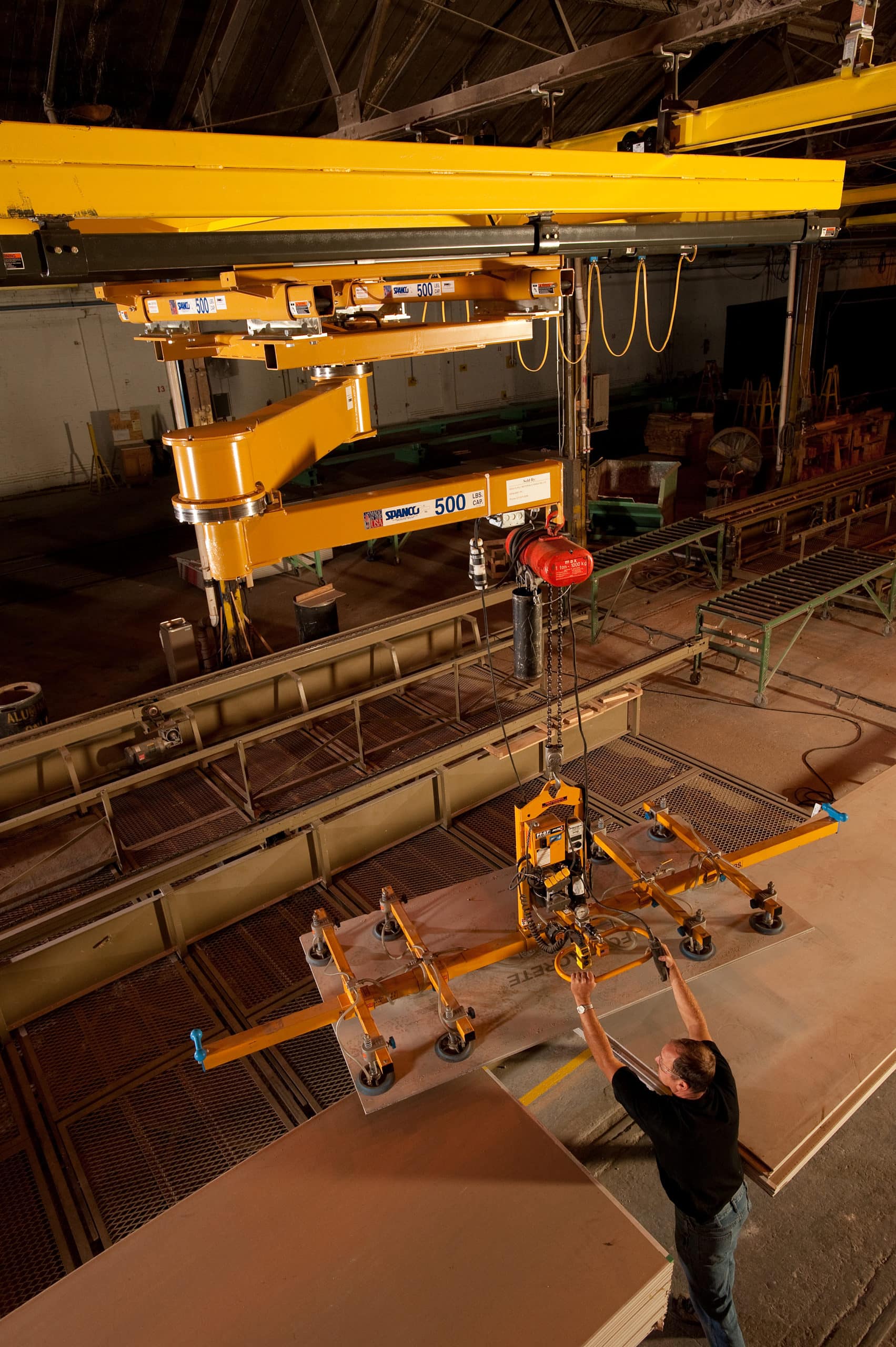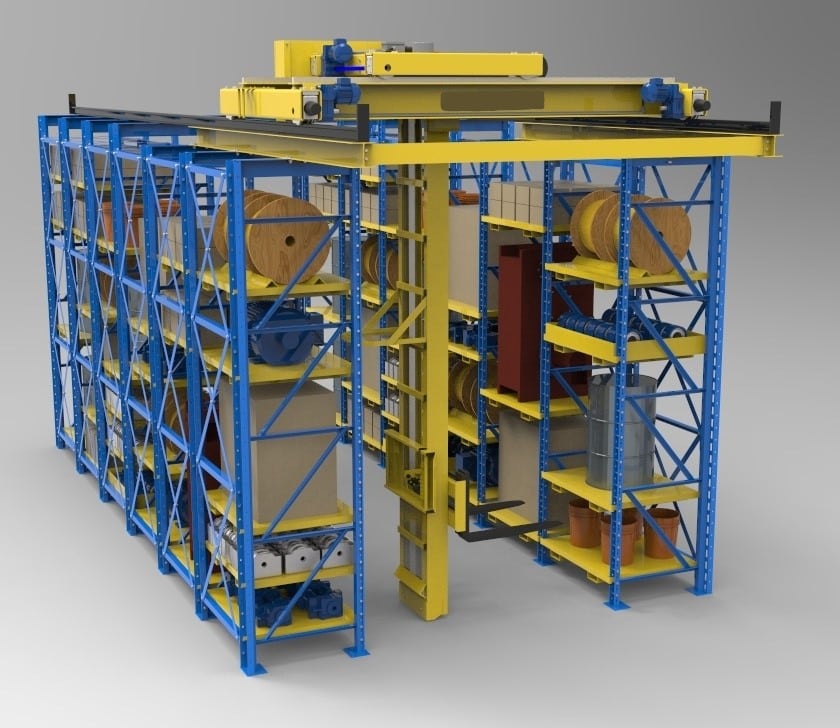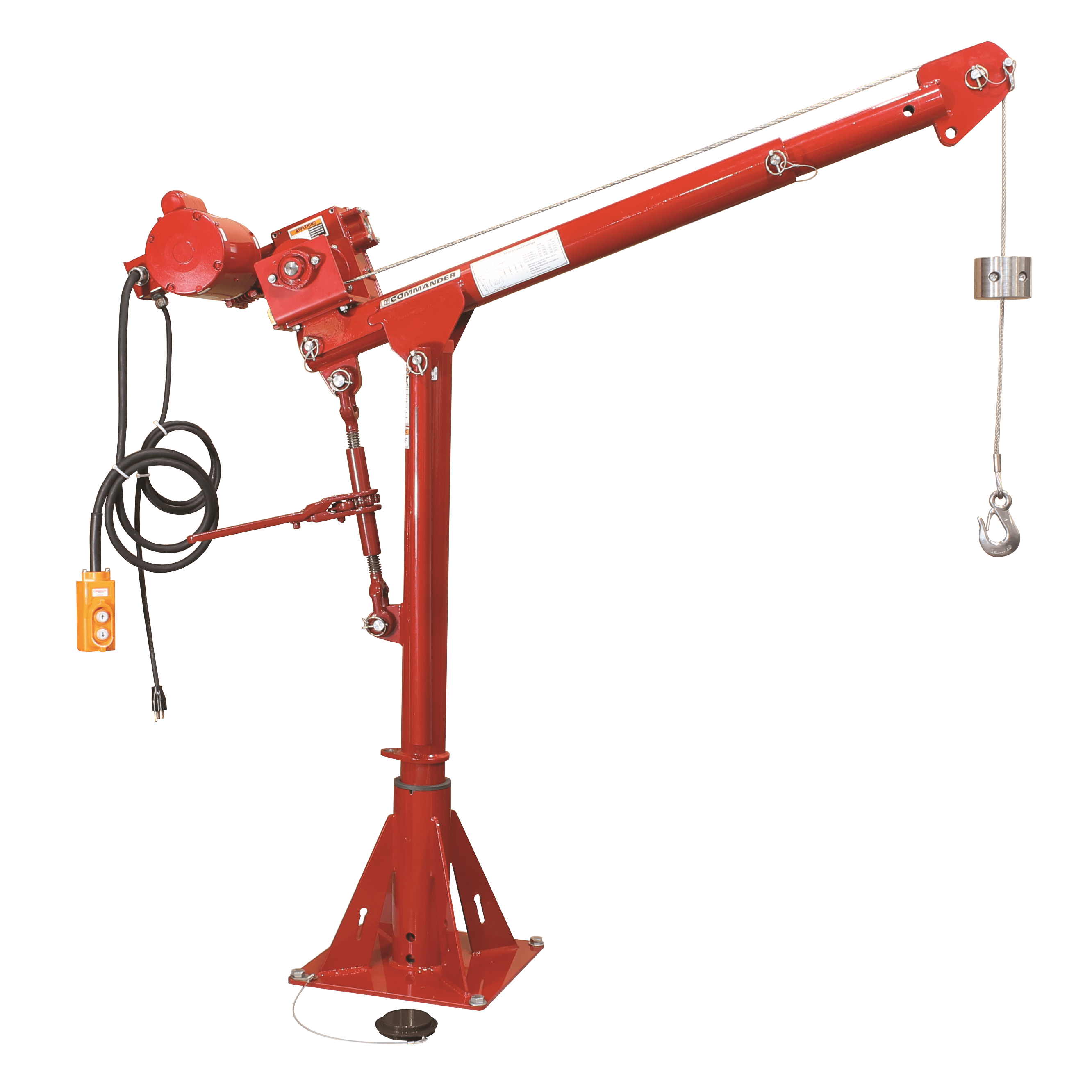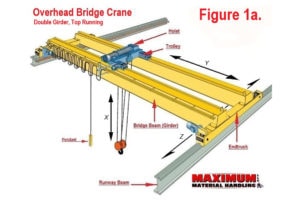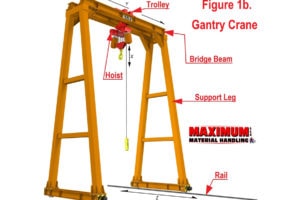Overhead Crane; definition (noun) (as it relates to material handling)
A device, system and or structure, spanning a designated area, designed to raise, lower and transport all manner of material from one point to another.
- Bridge Crane (typical) is a fixed beam or beams supported at both ends by the end-trucks, thus creating the Bridge. The Hoist (the lifting and lowering component) is supported by the Trolley which traverses the bridge. The bridge travels perpendicular to and spans the gap between a pair of parallel running beams called the Runway. The bridge end-trucks ride along the runway beams establishing a system with the ability to operate in three-directional axes (x,y,z). See figure 1a. below.
- Gantry Crane (typical) is a self-supported Crane System. The Gantry is the framework, consisting of two upright support legs and a bridge beam or beams that span the two legs. The bridge beam supports the trolley. The trolley traverses the bridge beam and supports the hoist (the lifting and lowering component). The gantry legs are supported by wheels and travel on the ground, floor or rails. See figure 1b. below.
- Jib Crane (freestanding, typical) consists of three main components, the mast, head, and boom or jib. The Mast (also called the post or column) is the vertical support anchored to an adequate foundation. The Head (also called the box, box head or head bearing) sits atop the mast and contains the head and trunnion assembly bearings. The head rotates up to 360-degrees on the mast and the horizontal Boom (also called the jib) sits atop the head. Add a hoist for lifting and a trolley for traversing the boom and the system is complete. See figure 1c. below.
History
Overhead cranes were in wide use throughout industry as early as the mid 1800’s. These early cranes were hand operated, labor intensive and had many limitations. In the 1890’s electric powered cranes began to make their way into operation and by the early 1900’s They were on their way to becoming commonplace. The 1920’s saw the creation of the EOCI (Electric Overhead Crane Institute). The EOCI brought established standards and a widening of available applications.
By the 1940’s sealed gearboxes and the use of roller bearings provided greater efficiency. The 1960’s ushered in significant improvements for crane controls, bringing about smoother performance and safer handling of material. During the 1970’s the CMAA (Crane Manufactures Association of America) the successor to the EOCI published Specification 70 and 74. These were in-depth and diversified design standards for overhead cranes that streamlined the manufacturing process, making overhead cranes more widely accessible to industry. The 1980’s brought about the widespread use of radio control, furthering the productivity of overhead cranes.
During the 1990’s the increasing availability of VFD (Variable Frequency Drive) Revolutionized the control capability of overhead cranes. Leading industry to modernize its manufacturing and assembly techniques, thus fashioning a more prosperous and favorable work environment. The 2000’s continued to bring forth all the previous innovations in a more efficient and cost-effective manner, opening the door to mainstream wireless communication, monitoring software and diverse operating platforms.
Considerations
Purchasing a crane system can be a sizable investment for a company and in many cases will be an asset that will see that organization through several decades of service. For this reason, many factors should go into the planning stage. Circumstances that require analysis are; correctly rating the load capacity, determining the duty cycle and service class, accurately calculating the available space, computing the maximum hook height, clarifying hook travel potential, factoring available power, considering future expansion and balancing that with your available budget.
Capabilities
Through the history of overhead cranes, industry has pushed crane manufactures to develop more advanced products to meet the requirements of ever evolving production conditions. Throughout much of that history, Maximum Material Handling’s personnel have been there to facilitate the merger of these two forces.
We understand all the unique factors that go into choosing the proper equipment that best suits the customer’s application, including:
- Site Visit – We will gain firsthand knowledge of your facility and application, enabling us to provide an accurate layout and comprehensive proposal.
- Engineering – We can overcome obstacles that turn simple projects into difficult ones. We can take the circumstances you are faced with, put them up against the requirements you must meet and develop a solution you can thrive on.
- Installation – We can take the system we propose and place it into action. Our team of skilled and trained personnel, matched with our arsenal of equipment, can handle all situations.
- Load Testing – Prior to placing the system into operation, we can perform a complete load test of the equipment, furnish documentation to satisfy any requirements and provide peace of mind.
- Training – Before handing this newly acquired asset over to your personnel, we can walk them through the do’s and don’ts of proper operation. This can better aid in a safer work environment and minimize undue mishandling of the equipment in order to lesson unnecessary maintenance issues.
- Service – We can provide complete service of all the equipment we supply. Be it; Emergency Breakdown, Warranty Repair or Routine Service.
- Inspections – We can provide comprehensive OSHA and Preventative Maintenance Inspections on all the equipment we supply.
For more information, you can learn about the services Maximum Material Handling offers here.
Product Sourcing
Maximum Material Handling LLC has partnered with and distributes for many top leading manufactures of overhead cranes and components. We are the authorized repair and warranty center for many of these manufactures. We only source products from manufactures that adhere to the specification set forth by the following governing bodies:
- CMAA (Crane Manufacturers Association of America)
- HMI (Hoist Manufacturers Institute)
- ASME (American Society of Mechanical Engineers)
- ANSI (American National Standards Institute)
- OSHA (Occupational Safety and Health Administration)
- AISC (American Institute of Steel Construction)
Crane Options
Choosing the right crane for the job is an important process. There are many types of cranes and within each type there are often many variations. Below are several examples of typical cranes. When you are ready to move forward please contact us. We are ready to help.
Overhead Crane Types
